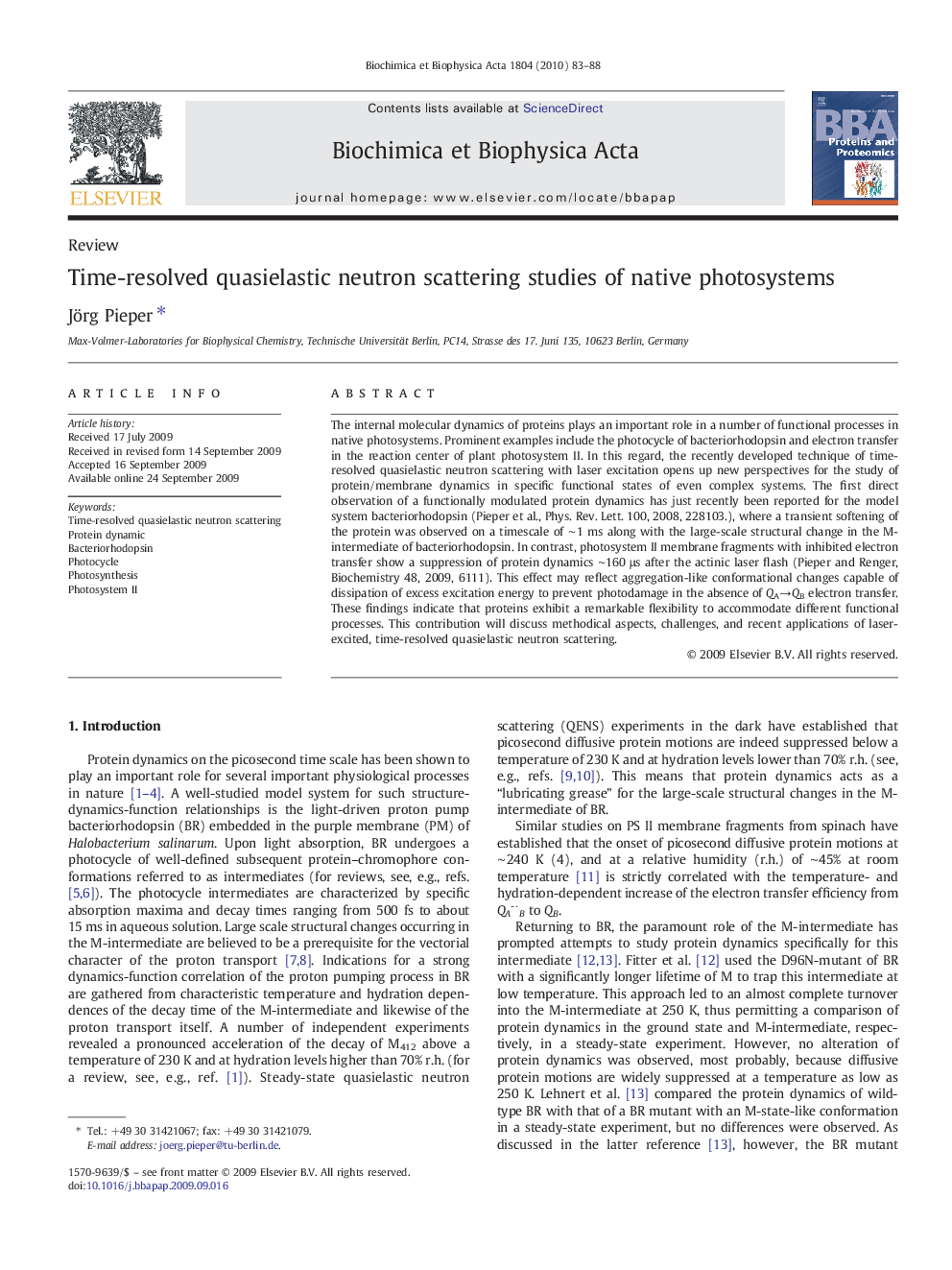| Article ID | Journal | Published Year | Pages | File Type |
|---|---|---|---|---|
| 10536963 | Biochimica et Biophysica Acta (BBA) - Proteins and Proteomics | 2010 | 6 Pages |
Abstract
The internal molecular dynamics of proteins plays an important role in a number of functional processes in native photosystems. Prominent examples include the photocycle of bacteriorhodopsin and electron transfer in the reaction center of plant photosystem II. In this regard, the recently developed technique of time-resolved quasielastic neutron scattering with laser excitation opens up new perspectives for the study of protein/membrane dynamics in specific functional states of even complex systems. The first direct observation of a functionally modulated protein dynamics has just recently been reported for the model system bacteriorhodopsin (Pieper et al., Phys. Rev. Lett. 100, 2008, 228103.), where a transient softening of the protein was observed on a timescale of â¼Â 1 ms along with the large-scale structural change in the M-intermediate of bacteriorhodopsin. In contrast, photosystem II membrane fragments with inhibited electron transfer show a suppression of protein dynamics â¼160 μs after the actinic laser flash (Pieper and Renger, Biochemistry 48, 2009, 6111). This effect may reflect aggregation-like conformational changes capable of dissipation of excess excitation energy to prevent photodamage in the absence of QAâQB electron transfer. These findings indicate that proteins exhibit a remarkable flexibility to accommodate different functional processes. This contribution will discuss methodical aspects, challenges, and recent applications of laser-excited, time-resolved quasielastic neutron scattering.
Related Topics
Physical Sciences and Engineering
Chemistry
Analytical Chemistry
Authors
Jörg Pieper,
